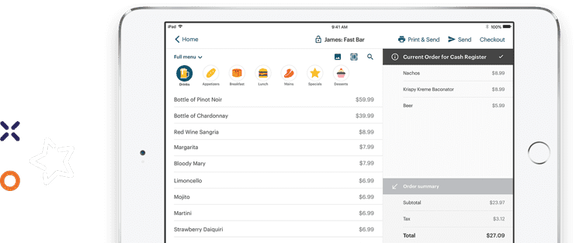In an industry as fast-paced, and fast-growing, as the restaurant business, it’s important to find a point of sale (POS) software system that can keep up. Modern POS software has evolved into a tool that streamlines every aspect of the restaurant business, from customer experience to user experience and administrative responsibilities.
As you move through the process of evaluating POS software for your restaurant, there are some key factors to consider as you compare options. Think about how a new system will affect your customers, your staff, and your profitability. Test or demo every solution that makes your shortlist, and look for the features that matter most to your team.
Pay particularly close attention to the following seven areas to ensure peak POS performance in your restaurant:
1. Customer Experience
At the end of the day, you’re in the business of keeping customers happy. Having a POS system that improves customer experience is essential. Customers appreciate being able to seamlessly split checks, move their bar tab, switch tables – and an added bonus, being able to make a payment right from their seat through the server’s iPad.
2. User Experience
Your staff use advanced software in their personal lives (tablets, smartphones, smart televisions, smart watches). Having to come into your restaurant and use poorly-designed, outdated, slow software, can quickly become a significant cause of frustration. A POS system that is intuitive, easy to learn, and easy to navigate, makes for a better user experience. They’ll also be able to clock in right within the system, making it easy to come into work and hit the ground running, and in the process, improving payroll automation and accuracy.
3. Data Access & Control
You can’t be at the restaurant 24/7, but with an older desktop-based system, you might feel like you have to be. That’s an especially annoying problem when you just need to make a small schedule or menu update, and you have to trek in on a weekend or late at night. Instead, choose POS software that can provide you with access to your data from any location, on any device. Whether it’s a menu update, a scheduling conflict, or a payroll issue, choose a POS that will let you handle it all in real-time, wherever you are.
4. Security
When security and maintenance are built into your agreement with the software vendor, pricey IT support and manual updates are nonexistent. Modern POS software will include automatic data backups, custom access controls, and data encryption to protect against employee negligence and criminal information theft. You’ll have peace of mind knowing your customer’s credit card numbers are safe and that your PCI compliance responsibilities are reduced too.
5. Reporting
Restaurants generate a lot of data about transactions and customers. If you want to get the full value of this data, you need a solution with intelligent reporting. Look for POS software that allows you to generate real-time reports and drill down into whichever metrics matter to your business. You’ll be able to see which products sell best at what times and days, and which sections are the most profitable. You’ll also have better insight into how your staff is performing, your true labor costs, food costs, and the flow of new customers.
6. Inventory
It’s no surprise – restaurants have to work with very thin margins. Look for a POS system that makes your inventory management simple. You should be able to easily track your ingredients and products and keep an eye on where all of it goes. Not only will you have better insight into what’s happening with your inventory, but you’ll be able to better communicate when it’s time to place an order, or if it’s time to cut back on reordering certain items.
7. Speed
At the end of the day, no matter what kind of restaurant you’re operating, speed of service is of utmost importance. You only have so much time to maximize your opportunity to earn revenue. That means moving through each step of the dining process as quickly as possible, while also offering a seamless experience for customers, wait staff, bar staff, cooks, and managers. The last thing you want is a POS system slowing that process down.
When considering a POS for your restaurant, keep these seven points top of mind during your evaluation process.






